i need help with this please.
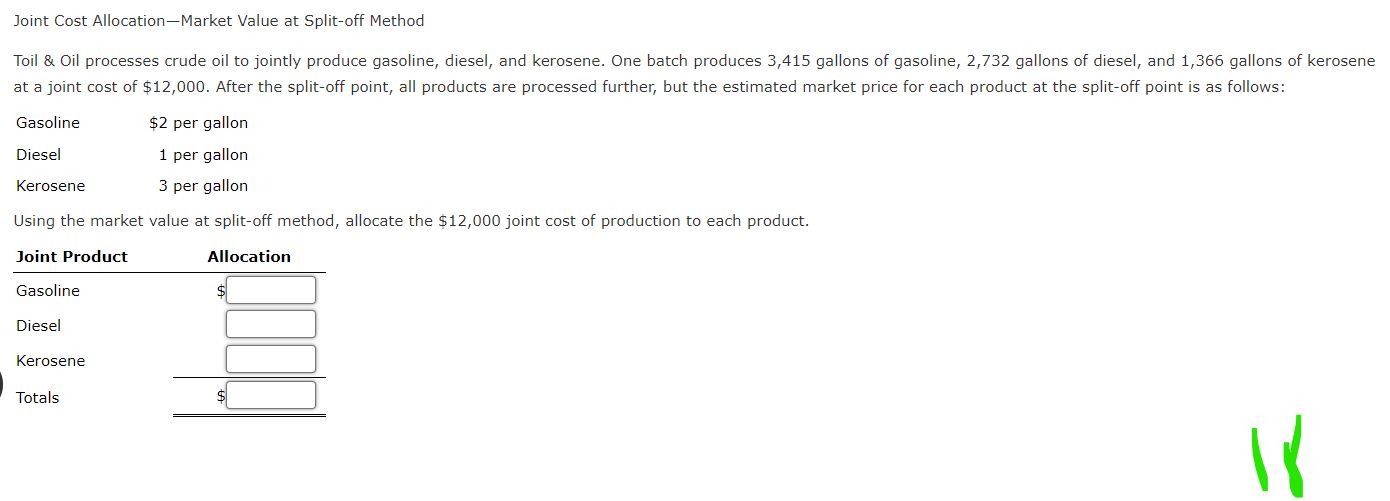
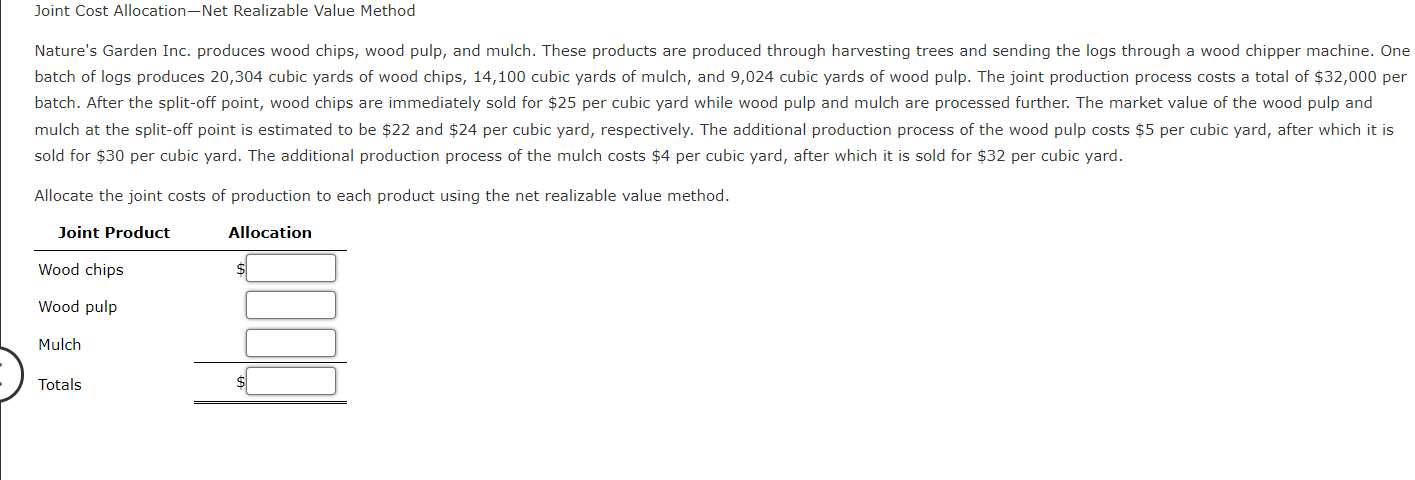
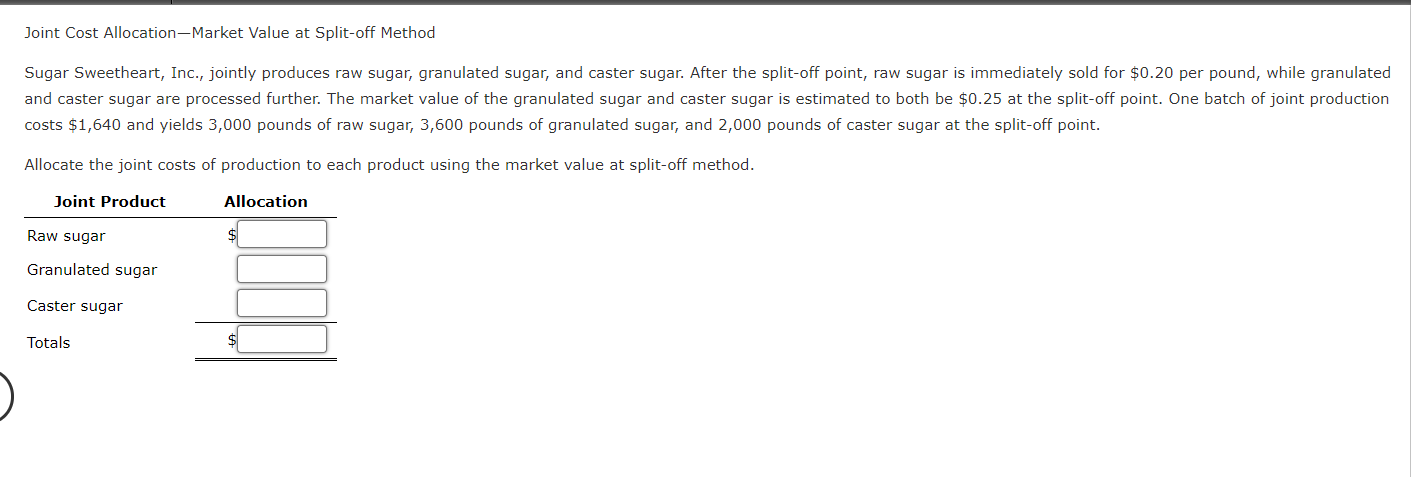
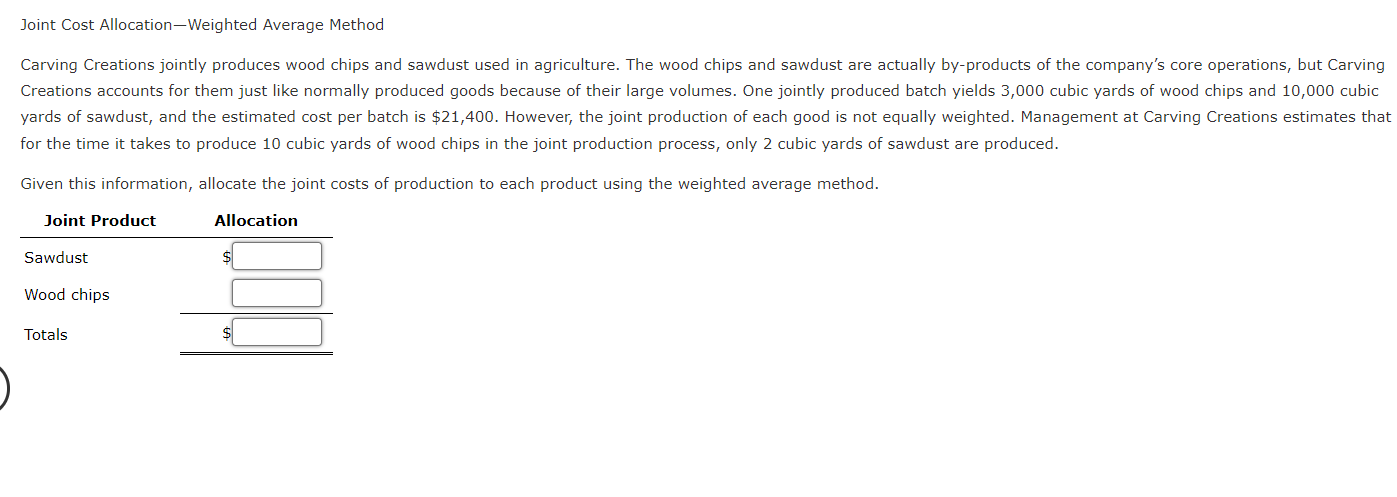

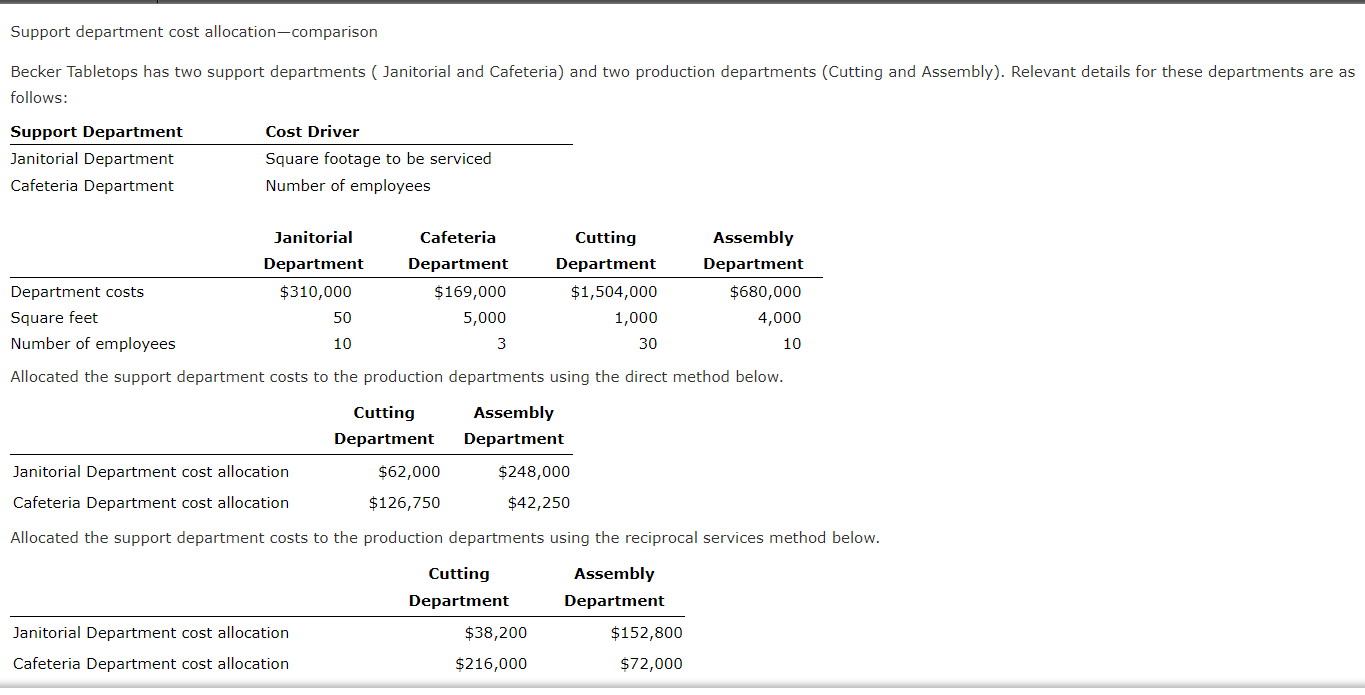
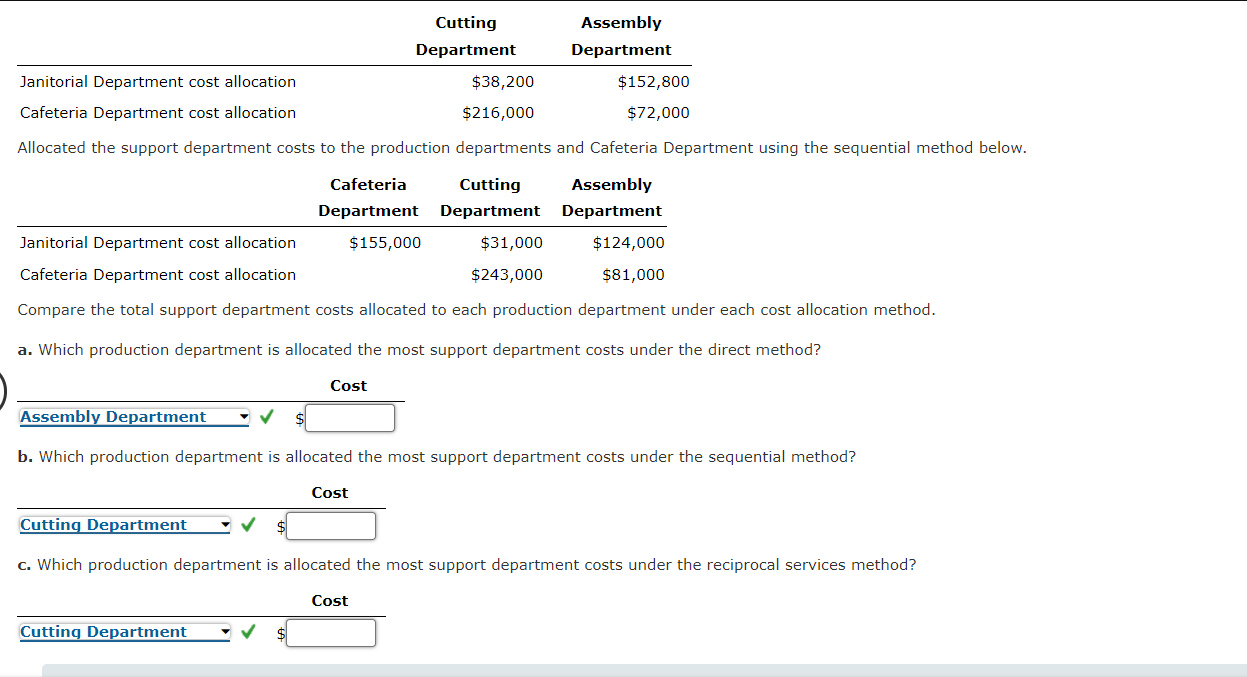
Joint Cost Allocation-Market Value at Split-off Method Toil & Oil processes crude oil to jointly produce gasoline, diesel, and kerosene. One batch produces 3,415 gallons of gasoline, 2,732 gallons of diesel, and 1,366 gallons of kerosene at a joint cost of $12,000. After the split-off point, all products are processed further, but the estimated market price for each product at the split-off point is as follows: Gasoline $2 per gallon Diesel 1 per gallon Kerosene 3 per gallon Using the market value at split-off method, allocate the $12,000 joint cost of production to each product. Joint Product Allocation Gasoline Diesel Kerosene Totals $ Joint Cost Allocation-Net Realizable Value Method Nature's Garden Inc. produces wood chips, wood pulp, and mulch. These products are produced through harvesting trees and sending the logs through a wood chipper machine. One batch of logs produces 20,304 cubic yards of wood chips, 14,100 cubic yards of mulch, and 9,024 cubic yards of wood pulp. The joint production process costs a total of $32,000 per batch. After the split-off point, wood chips are immediately sold for $25 per cubic yard while wood pulp and mulch are processed further. The market value of the wood pulp and mulch at the split-off point is estimated to be $22 and $24 per cubic yard, respectively. The additional production process of the wood pulp costs $5 per cubic yard, after which it is sold for $30 per cubic yard. The additional production process of the mulch costs $4 per cubic yard, after which it is sold for $32 per cubic yard. Allocate the joint costs of production to each product using the net realizable value method. Joint Product Allocation Wood chips Wood pulp Mulch Totals Joint Cost Allocation-Market Value at Split-off Method Sugar Sweetheart, Inc., jointly produces raw sugar, granulated sugar, and caster sugar. After the split-off point, raw sugar is immediately sold for $0.20 per pound, while granulated and caster sugar are processed further. The market value of the granulated sugar and caster sugar is estimated to both be $0.25 at the split-off point. One batch of joint production costs $1,640 and yields 3,000 pounds of raw sugar, 3,600 pounds of granulated sugar, and 2,000 pounds of caster sugar at the split-off point. Allocate the joint costs of production to each product using the market value at split-off method. Joint Product Allocation Raw sugar Granulated sugar Caster sugar Totals Joint Cost Allocation-Weighted Average Method Carving Creations jointly produces wood chips and sawdust used in agriculture. The wood chips and sawdust are actually by-products of the company's core operations, but Carving Creations accounts for them just like normally produced goods because of their large volumes. One jointly produced batch yields 3,000 cubic yards of wood chips and 10,000 cubic yards of sawdust, and the estimated cost per batch is $21,400. However, the joint production of each good is not equally weighted. Management at Carving Creations estimates that for the time it takes to produce 10 cubic yards of wood chips in the joint production process, only 2 cubic yards of sawdust are produced. Given this information, allocate the joint costs of production to each product using the weighted average method. Joint Product Allocation Sawdust Wood chips Totals Joint Cost Allocation-Physical Units Method Board-It, Inc., produces the following types of 2 x 4 x 10 wood boards: washed, stained, and pressure treated. These products are produced jointly until they are cut. One batch produces 45 washed boards, 35 stained boards, and 20 pressure treated boards. The joint production process costs a total of $710 per batch. Using the physical units method, allocate the joint production cost to each product. Round your answers to two decimal places. Joint Product Allocation Washed Stained Pressure treated Totals Support department cost allocation-comparison Becker Tabletops has two support departments (Janitorial and Cafeteria) and two production departments (Cutting and Assembly). Relevant details for these departments are as follows: Support Department Janitorial Department Cafeteria Department Cost Driver Square footage to be serviced Number of employees Janitorial Cafeteria Cutting Assembly Department Department Department Department Department costs $310,000 $169,000 $1,504,000 $680,000 Square feet 50 5,000 1,000 4,000 Number of employees 10 3 30 10 Allocated the support department costs to the production departments using the direct method below. Cutting Assembly Department Department Janitorial Department cost allocation $62,000 $248,000 Cafeteria Department cost allocation $126,750 $42,250 Allocated the support department costs to the production departments using the reciprocal services method below. Cutting Department Assembly Department $152,800 $38,200 Janitorial Department cost allocation Cafeteria Department cost allocation $216,000 $72,000 Cutting Department Assembly Department Janitorial Department cost allocation Cafeteria Department cost allocation $38,200 $216,000 $152,800 $72,000 Allocated the support department costs to the production departments and Cafeteria Department using the sequential method below. Cafeteria Cutting Assembly Department Department Department $155,000 $31,000 $124,000 Janitorial Department cost allocation Cafeteria Department cost allocation $243,000 $81,000 Compare the total support department costs allocated to each production department under each cost allocation method. a. Which production department is allocated the most support department costs under the direct method? Cost Assembly Department b. Which production department is allocated the most support department costs under the sequential method? Cost Cutting Department c. Which production department is allocated the most support department costs under the reciprocal services method? Cost Cutting Department













